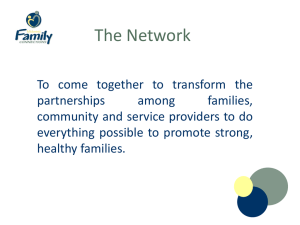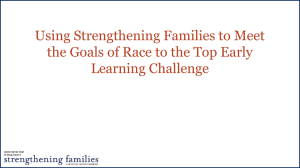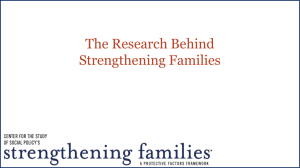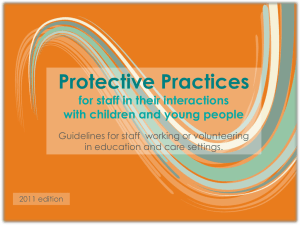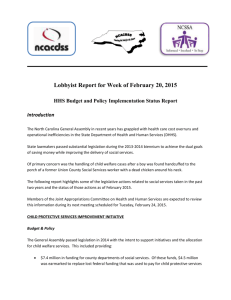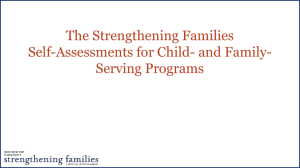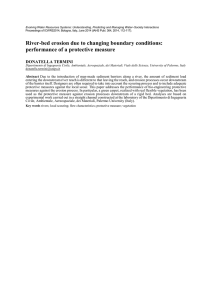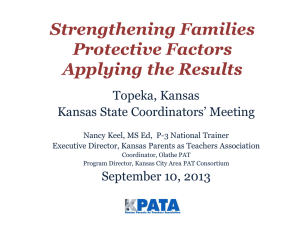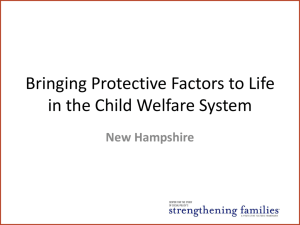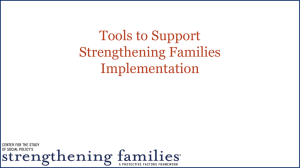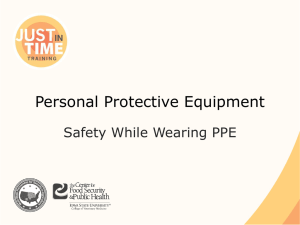Using a Protective Factors Framework to Build ECE/CW Collaboration
advertisement
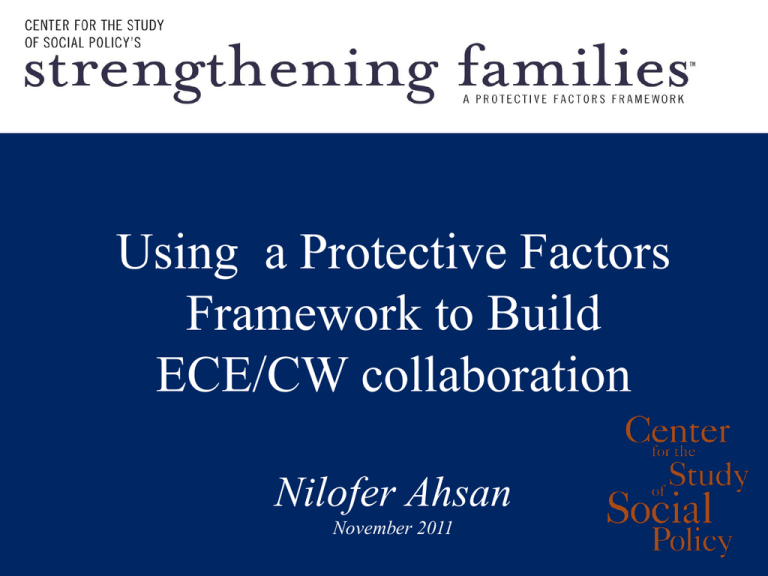
Using a Protective Factors Framework to Build ECE/CW collaboration Nilofer Ahsan November 2011 What we know about the developmental needs of young kids in CW • Early attachment is a basic building block for many aspects of early development • Early childhood trauma can have a cascading impact on ongoing development • One aspect of the impact of trauma is that it impacts behavior • Protective factors are important and can buffer and mitigate the impacts of trauma • Most children will return or stay with their biological parents Therefore….. • Young children in CW will need particular focus on their developmental needs • Developmental supports for these children must be informed by an understanding of the impact of trauma on development • We also need to think intentionally about how to support the capacity of families to keep children safe and support their early development Therefore…..A four point agenda • Ensure that young children in CW are connected to quality ECE programs and other developmental supports • Build the capacity in ECE programs to work with and support development for children who have experienced trauma • Build the capacity in CW to recognize and respond to the development needs of young children • Support the capacity of ECE programs and CW to build protective factors to strengthen families Federal priorities around ECE/CW linkages • Requirement for collaboration between HS and CW • ACYF and Child Care Bureau Memorandum encouraging collaboration • ACYF’s new focus on well-being • Overarching push for collaboration at the federal level • Requirements around Part C What we know: Families thrive when protective factors are robust in their lives and communities FIVE PROTECTIVE FACTORS PARENTAL RESILIENCE SOCIAL CONNECTIONS KNOWLEDGE of PARENTING and CHILD DEVELOPMENT CONCRETE SUPPORT in TIMES of NEED SOCIAL and EMOTIONAL COMPETENCE of CHILDREN ALIGNING RESULTS FOR FAMILIES Strengthening Families National Network WA MT ME ND OR MN ID SD NY WI RI NE UT OH IL WV MO NC TN OK NM AR TX MD VA KY SC MS AK AL GA LA FL HI NJ DE IN CO KS AZ CT PA IA NV MA MI WY CA V T N H DC FEDERAL PARTNERS Administration for Children, Youth and Families: Children’s Bureau, Office on Child Abuse and Neglect Administration on Children and Families, Office of Child Care and Office of Head Start Maternal and Child Health Bureau (ECCS) Substance Abuse and Mental Health Services Administration (SAMHSA), local Project Launch sites Department of Defense, New Parents Program and Family Advocacy Program STRENGTHENING FAMILIES NATIONAL NETWORK LEVERS FOR IMPLEMENTING AND SUSTAINING STRENGTHENING FAMILIES •Integration into policies and systems •Professional development •Real parent partnerships How SF states are working with Child Welfare AK Protective Factors are being x integrated into training for child welfare workers: Strengthening Families is becoming part of the child welfare practice model CT IL MA ME MI MO NC NH NJ x x x PA TN x x x x x x x x x Protective factors are being integrated into child welfare assessment tools x x x x x x x New partnerships are being formed between child welfare and early care and education programs using Strengthening Families x x x x x x x x Child welfare provides significant funding for state Strengthening Families work x x x x EC/CW linkages other directions • Learning from states already doing this work • Working across states to develop training resources for child welfare • Cross-walking protective capacities with protective factors • Identifying key places to build in a protective factors approach across CW decision-making • Partnering with states to build this agenda How you can stay involved • Upcoming webinar with the NRC for InHome Services • Get involved with your state SF efforts • Join the SF mailing list www.strengtheningfamilies.net Nilofer Ahsan Center for the Study of Social Policy nilofer.ahsan@cssp.org Questions?

